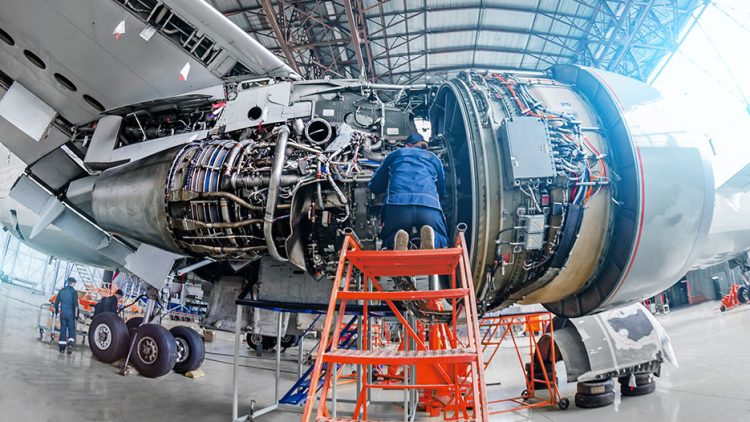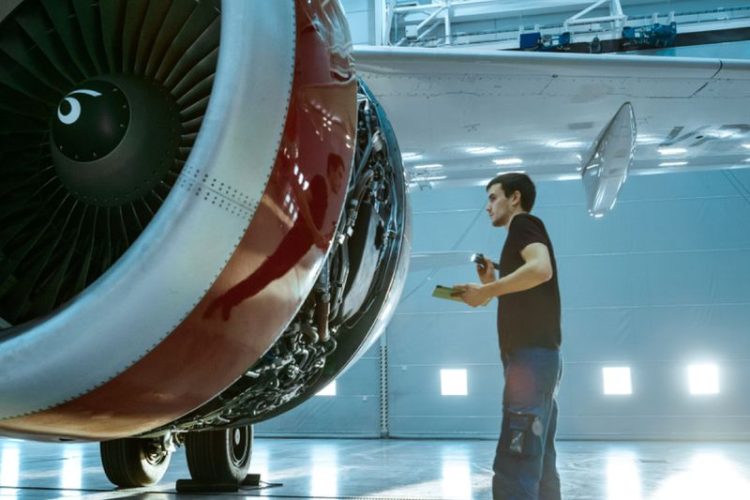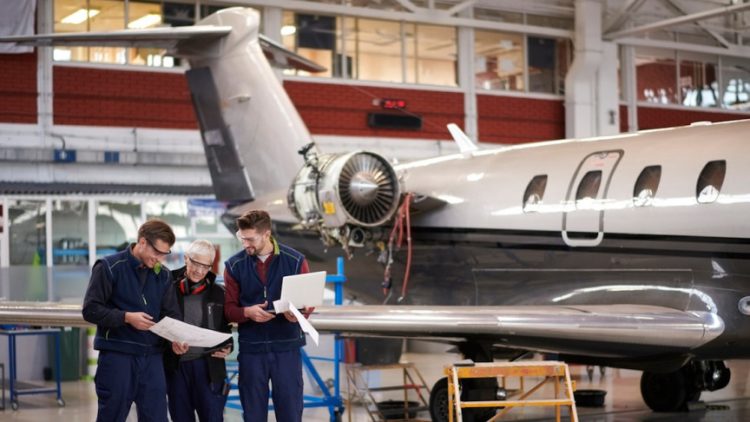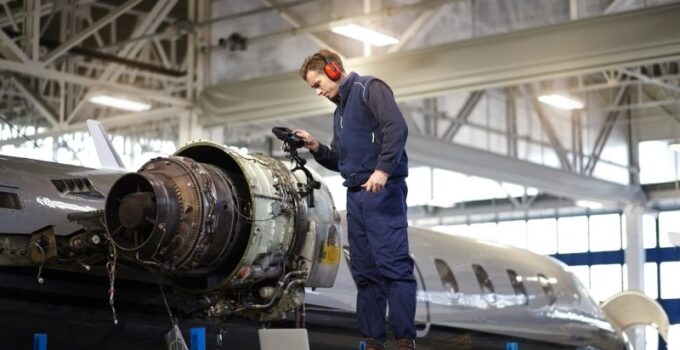Aeronautical engineering can be summarized as a branch of aerospace engineering that assigns to the study and creation of advanced technologies in defence systems, the field of aviation, and space technology. The Aeronautical Engineering Course prepares a candidate for the development, designing, maintenance, testing, and operation of military aircraft, and commercial aeroplanes along with their components. There is a huge contribution of aeronautical engineering in the field of aviation even though it does not relate to the fact of Aeronautical Engineering flying.
Aeronautical engineering can be broken into two main branches – Aeronautics and Astronautics. These two are not the same, although pretty close to each other, where Aeronautics deals with things that fly in the air and Astronautics deals with things that go into space. This is an oversimplified explanation and the easiest one to take in.
To be more specific let’s check out a perfect guide to completing an Aerospace or Aeronautical Engineering Course.
Page Contents
What do Aeronautical Engineers do?
Aeronautical Engineers are responsible for eco-friendly, innovative, energy-conserving, and efficient ways of air transportation. Therefore, Aeronautical Engineers or Aerospace Engineers are the main head for manufacturing and designing aircraft and propulsion systems. Whenever you think about Aeronautical engineering you should immediately think about various applications that it applies to. Let us check on the job responsibilities of an Aeronautical Engineer in the field.

Source: ed2go.com
- Design manufacturing, and testing of aerospace products. Directing the other junior engineers to work accordingly
- Calculating and regulating the usefulness of projects from financial as well as technical standpoints
- Blazing the safety of the projects and their capability to meet the demands of the goals of the organization
- Developing various mechanisms for acceptance of design techniques, standardizing frame qualities, and forming project management rules
- Inspection and repair of malfunctioning and damaged projects
Note: The job responsibilities do not have boundaries here. New responsibilities and work arise depending on the current situation and field. For example, the responsibilities of an Aeronautical Engineer from the defence industry are more than the ones from the civil industry.
Another interesting thing to note here is that there are plenty of interesting subfields that let you focus and work on more specific aspects of vehicles. Some of the big subfields are aerodynamics, propulsion, controls and stability, and structures. As you can see these are very specific and they allow an aeronautical engineer to focus on certain fields and subsystems that can help both real-life applications in cars, trains as well as aircraft, ships, missiles and so on.
For more info about aeronautical engineering courses like course duration, course fees, admission, and exams, visit collegedekho.com
How to become a successful Aerospace Engineer?
The basic skill set that is required by an aerospace engineer is a vast knowledge of Mathematics and Physics since the entire concept revolves around aerodynamics and the laws of Physics. For mastering designing, aircraft candidates will have to be proficient in designing software such as CAD, CAM, etc. Interpersonal skills such as leadership, communication, and teamwork have to be mastered.

Source: canadianvisa.org
Another thing you need to know is the fact that, although some entry-level aerospace engineers, in general, do not require a license, higher-level positions may require a PE or Professional Engineering license. To become an aeronautical engineer prospective candidate must complete a bachelor’s degree program, usually in aerospace or aeronautical engineering which has been approved by the ABET or Accreditation Board of Engineering and Technology. These programs can take up to 5 years to complete and students begin their education by enrolling in core courses in mathematics, chemistry and physics. You will also be required to complete introductory labs in which you test engineering principles applied to flight and propulsion.
Eligibility Criteria of Aeronautical Engineering Course
To get admission into BTech and BE courses in aerospace engineering, candidates will have to pass their class 12 from s recognized board with 70% marks in Physics, Chemistry, and Mathematics. Candidates belonging to reserved categories will be given relaxation. Candidates having a diploma in aerospace engineering can also apply for BTech and BE courses in aerospace engineering. To get a higher pay scale in aerospace engineering, candidates will have to pass BTech and BE courses from a recognized board and score good scores in entrance exams such as JEE Main, JEE Advanced, etc. One can choose to pursue MTech in aeronautical engineering after pursuing a BTech course through entrance exams such as GATE.
Top Aeronautical or Aerospace Engineering Colleges in India
The top Aeronautical engineering colleges in India that provide Aeronautical Engineering Degree have been highlighted along with the fee structure and NIRF ranking in the table below. Candidates who aspire to pursue an Aeronautical engineering degree from the top colleges in India can take a look at the table below.
| NIRF Ranking | Institute Name | Fee |
| 1 | IIT Madras | INR 8.04 Lakhs |
| 3 | IIT Bombay | INR 9.08 Lakhs |
| 4 | IIT Kanpur | INR 8.38 Lakhs |
| 5 | IIT Kharagpur | NA |
| 6 | IIT Roorkee | INR 8.52 Lakhs |
Aeronautical Engineering Scope
The demand for aerospace engineers is global. The research and development industry is constantly working on making aircrafts cheaper and more sustainable. The biggest recruiters of aerospace engineers are countries such as England, France, the USA, and India. There are several areas of specializing in aerospace engineering such as propulsion or aerodynamics, thermodynamics, celestial mechanics, etc. There are other options for a candidate to choose for specializing in aerospace products such as rockets, helicopters, missiles, and military jets.
Some of the top job profiles under aerospace engineers are aeronautical mechanical engineers, aeronautical electrical engineers, flight engineers, etc.
Aeronautical Mechanical Engineers- They are responsible for keeping the aircraft ready and fit for use. The salary of aeronautical mechanical engineers in India can range from Rs 5 LPA to Rs 6 LPA. Abroad, the salary of aeronautical mechanical engineers can range from $70, 000 to $1,00,000 (approx).
Aeronautical Electrical Engineers- They make sure that the electronics and electrical equipment such as navigation panels, radar, etc are in the proper place. The salary of Aeronautical Electrical Engineers in India can range from Rs 3 LPA to Rs 4 LPA. Abroad, the salary of Aeronautical Electrical Engineers can be $ 125,710 PA (approx).
Flight fighters- They are responsible for maintaining the purity of safe flying of the aircraft with complications. The salary of Flight fighters in India can range from Rs 2 LPA to Rs 23 LPA. Abroad, the salary of Flight fighters can be $ 104,000 to $121,000 PA (approx).

Source: interestingengineering.com
Therefore having an Aeronautical engineering degree will not only bring you lucrative pay but also high status and standard of living. The demand for Aeronautical engineers is rising day by day in both the public and private sectors. It is intellectually challenging whereby employers offer huge perks to retain engineers in their organizations.
A fun fact at the closing of this article is the research, or rather a prediction made by the BLS or the US Bureau of Labor and Statistics stating that job opportunities for aerospace engineers were projected to decrease 2% from 2014-to 2024 which is a lot slower than average. This means that this industry still has a lot to offer and that it still is in demand for good engineers who know their job. As far as the pay goes, as of May 2015, the salary grew for aerospace engineers and aeronautical engineers from %107,830 to the point that it is now, and with the current state of the world and micro and macro economical happenings, it will continue to grow more as the demand for this profession is more needed.





